Designing a Dazzling Desert Landscape
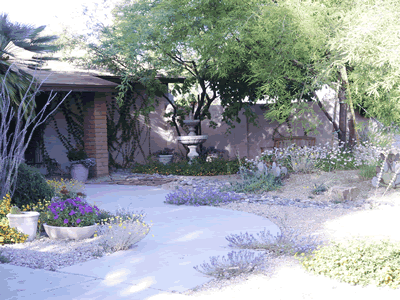
Photographer: Jo Miller
There is a reason realtors use the term “curb appeal.” The front of your home is the first impression for visitors.
It is also the first thing you will see when you come home after a long day of work. Back yards are more private spaces and can be a sanctuary, a place to escape. Beautiful desert landscapes come in many shapes and sizes, and they can be both inviting and low-water-use. It doesn’t matter if your yard and your budget are small, you can still create a comfortable outdoor living space. All you need is a well-thought-out plan, some imagination, and patience.
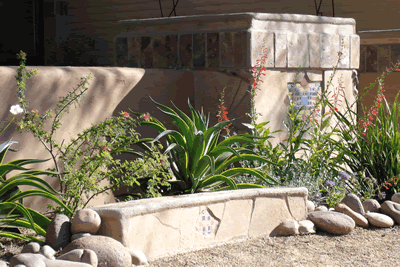
Photographer: Kathleen Moore
It is often tempting to browse the nurseries and come home with a car-load of plants. But before you don those garden clogs and pick up a shovel, there are some issues you should address: What do you envision your yard looking like? What type of "mood" do you wish to create? How large is your budget? How much time are you willing to give to establish and maintain your landscape? To help you get started, fill out the Organizing Your Design worksheet.
Keep in mind throughout the design process that water is our most precious resource. Using the seven Xeriscape (low-water) principles is the responsible way to protect our desert environment.
Analyze your space:
| □ | Investigate the microclimate in your yard, which is determined by your location, existing structures, and plants. Take note of the sun’s path across your yard at different times of day and even different times of year. Shade and temperature can play a large role in the way you decide how various spaces will be utilized. |
| □ | Walk your property and take note of eyesores. Do you have a utility box in the corner? Is there an unsightly shed you wish to camouflage? Can neighbors easily peer over your fence? |
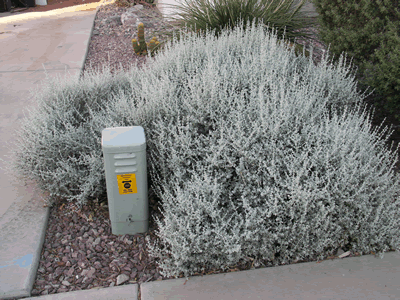
Photographer: Kathleen Moore
This Leucophyllam candidum is the same color as the utility box and helps to mask its view from the yard.
| □ | Don’t forget to take a look at your yard from the interior of your home. What is the first thing you see when you are washing dishes at the sink? Is your garbage can in the way? |
| □ | Evaluate your current irrigation system. You should assess whether your irrigation system needs only minor updates and repairs or is perhaps so antiquated it should be abandoned for a completely new system. |
Whether you decide to hire a designer or complete a design yourself, it is important to get a good start. Draw a map of your property to begin your design process. The Getting a Good Start worksheet will guide you through making a site map.
Organize your design:
Once your site map is complete, you are ready for the task of organizing and integrating the information from your sketch with your ideas of what you need and want in your landscape. Completing the Organizing Your Design worksheet will provide the information that you need to complete a preliminary plan.
Draw a preliminary plan:
Overlay your site map with tracing paper. Begin making a rough sketch of where you would like to place design elements identified on your Getting a Good Start and the Organizing Your Design worksheet. Use simple symbols such as circles and squares to designate planting beds, trees for shading, patios, seating areas, etc. Use a light-weight pencil that can be easily erased. Start with your priority items and work from there. Pay particular attention to how things connect. Be open to the possibilities. Do not expect it all to "fit" together in one sitting. Let yourself have a few hours or even days to sit with an idea. You may need to educate yourself or hire a consultant on a particular area before taking action (i.e. water harvesting, plant selection, irrigation installation, etc.)
Keep in mind:
Your own personal tastes will play a large role in how your yard looks. Keep the following in mind as you are finalizing your design.
Texture: Texture is the surface quality of an item that can be seen or felt. Surfaces in the landscape include buildings, walks, patios, groundcovers, and plants. Texture can be coarse, medium, fine, smooth, rough, glossy, or dull. As with the other details, dominant or favorite texture should be used as a guideline in the design in order to unify the landscape with the house and rest of the property.
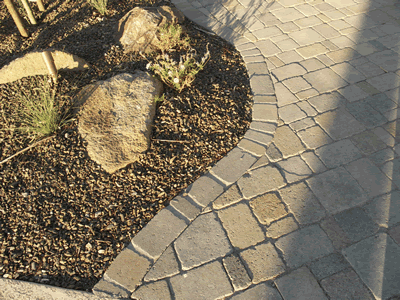
Photographer: Kathleen Moore
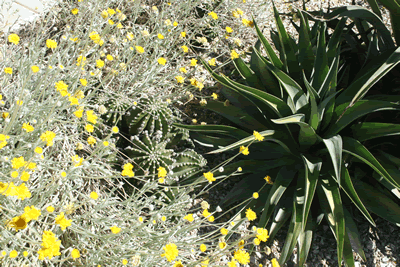
Photographer: Kathleen Moore
Textures can be found in hardscape elements or in different types of plants.
Seasonal Color: We are fortunate in the desert to be able to have color year-round. When choosing plants, keep note of flowering or fruiting times to be sure you have coverage all year, not just in the spring. Read more about bloom times in Color Combinations. Annual plants are considered accent plants, and are seasonal (short-lived). If you are budget conscious, plan to use these sparingly and invest in colorful shrubs and perennials.
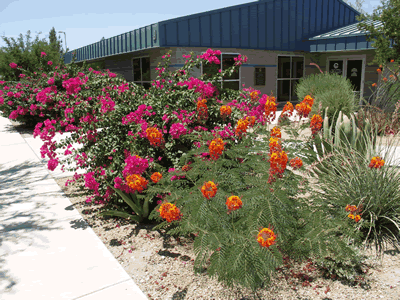
Photographer: Kathleen Moore
Drainage: The next time it rains go outside and make note of the water patterns in your yard. Is most of it cascading off your roof onto the driveway and out into the street? Do you have water pooling near your foundation? Simple gutter systems and earthworks can keep the precious water that falls on your property to water your plants. Read more about Rainwater Harvesting.
Finalize your plans:
Looking over the different scenarios you have drawn out on tracing paper, choose the design that best fits your needs. Once you are satisfied with your basic plan, transfer your ideas directly to your site map.
Decide how to budget your time and money:
Your design can be completed in stages as your budget allows. Remember that small plants are less costly and will catch up to more mature specimens very quickly. For installation tips go to Landscape Installation Tips– Necessary Details
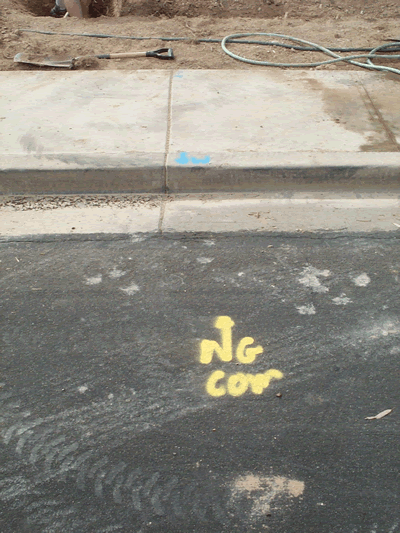
Photographer: Kathleen Moore
If you have questions regarding local building codes, permits, or homeowner association rules, get in touch with your local city or community agency. Before you break ground contact your local Blue Stake Center (1-800-STAKE IT) to locate any utility lines in the area.
Jo Miller Water Conservation Program Manager City of Glendale |
Kathleen Moore Water Conservation Coordinator City of Chandler |